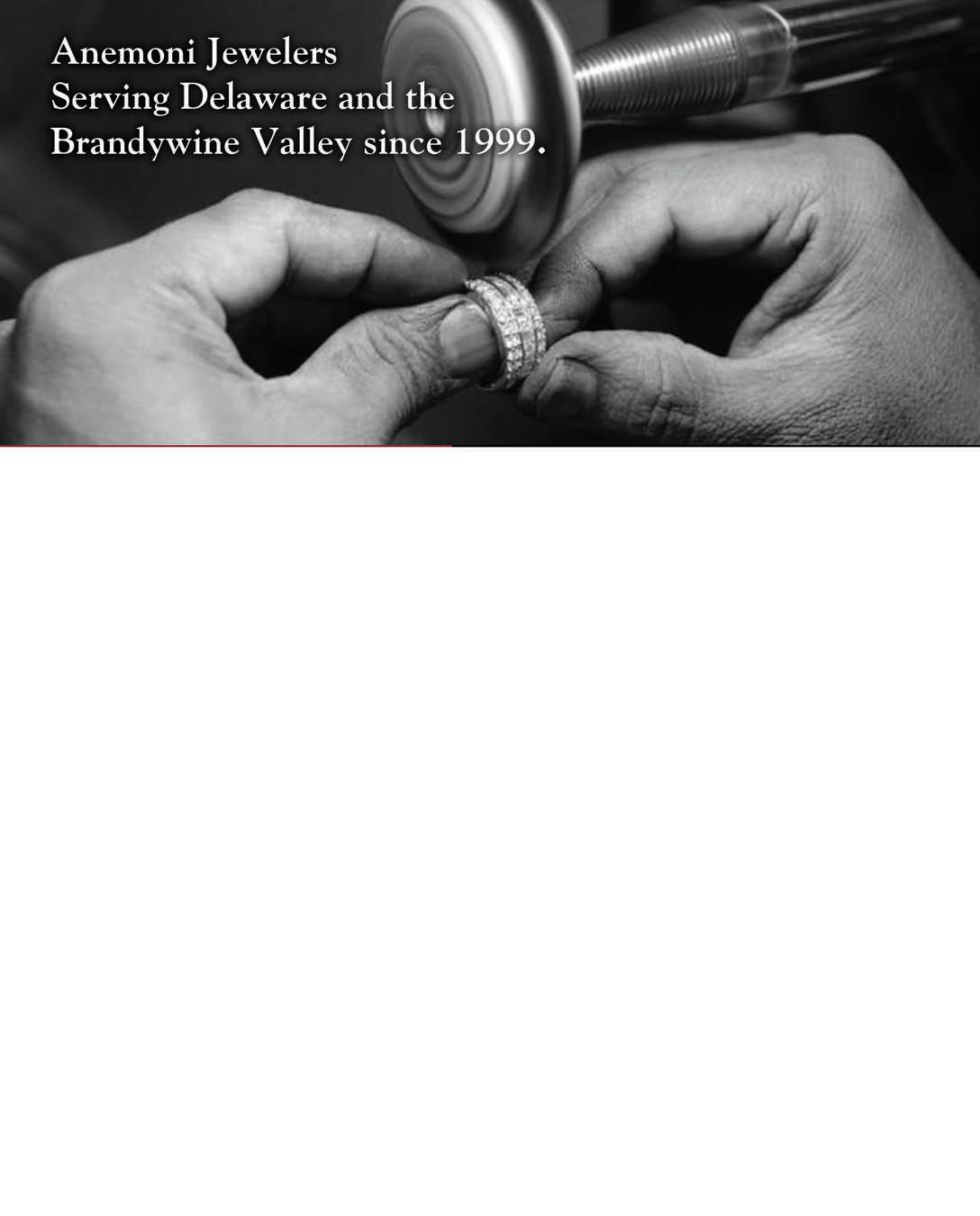


































































As always, all activities are free, courtesy of our sponsors and partners
First Aid Station, (302)-378-7799. The Volunteer Hose Company, 27 W. Green St., will again provide a first aid station and also have mobile medical “gators” deployed throughout the festival area. If anyone attending the Peach Festival needs medical attention, please go to the fire hall or call (302)-378-7799.
The Parade kicks off the annual 31st annual OldeTyme Peach festival on Broad and Main Streets beginning at 9 am. It always includes an exciting variety of bands, antique cars, fire equipment, costumed participants, performing groups, noise, horses and color. Among those featured will be our own talented trifecta: the Appoquinimink, Middletown, and Odessa High School Marching Bands; the power ball in the mix is the 287th Delaware Army National Guard Band.
The Middletown Historical Society Booth at Cochran Square. Peach Festival T-shirts are available for purchase, as well as information, directions, and recruiting members. Peaches are available by the bag, or case. This year we are partnering with volunteers from the Middletown Cavalier’s High School Marching Band and Band Boosters, who will assist in selling peaches. The Band Boosters are this year’s recipient of the $1,000 Peach Festival Partnership Award given by the Middletown Historical Society.
Historical Society Museum and Grounds at the Academy Building (216 N. Broad St.)
The Middletown Historical Society Museum offers a great place to cool off, sit down, use the restrooms, purchase baked goods made by the MOT Senior
Center, and learn about local history. Both floors are now handicapped accessible, with a ramp leading to the back door and a new chair-lift. Come inside to look at the exhibits and get a coupon for a free ice cream courtesy of HyPoint Dairy!!
Downstairs we have our re-vamped “Introduction to Middletown” exhibit, plus two major exhibits: Making a Home in Middletown: a new exhibit showing the story of the multi-generational Evans-Ellison-Motter family who lived near the mill at Noxontown. This exhibit is full of fascinating items of daily use through the decades spanning the late 1800’s through the 1960’s. This family saved everything!
From Fear to Freedom is a collaborative art exhibition, with students from the Appoquinimink High School, located in the downstairs gallery. It tells the story of the Hawkins family as they flee slavery and travel through Middletown on their way to freedom.
Upstairs, we continue Courage and Compassion, which tells the story of abolition and the underground railroad in Middletown using period maps and artifacts. Two local Quaker families, the Hunns and the Alstons, are portrayed in the exhibit. Remember, we now have a chair lift for easy access to all exhibits.
We also feature a re-installment of the old schoolroom, a favorite of families, plus a new exhibit on the history the Everett Theater; and the story of Samuel Jones, a Mt. Pleasant peach era African-American, on the second floor.
A favorite group for the last several Peach Festivals, the Victorians of Virtue and Valor, have returned this year to offer an enactment, in period dress, of A 1925
Continued on Page 8
Saturday, August 17 17
Continued from Page 7
Bethesda Methodist Church Peach festival. There will be children’s games and crafts that would have been played and enjoyed in the ‘20s
A big hit at last year’s festival was The Little Farm petting zoo, which will be here again this year. Come make friends with the barnyard and other animals. For a small fee, kids may feed the animals, have their faces painter, or take a pony ride.
New this year will be a pottery demonstration with a potter and potter’s wheel, aimed at family participation.
Behind the museum is the action-packed Kids Zone provided by our partner, All Blown Up Inflatables. The popular Moon Bounce and other attractions will provide plenty of opportunity for kids to burn off excess energy. All activities, of course, are free.
Grace Church, 13 Pennington St., one of the best kept secrets at the Peach Festival will welcome visitors to our church. You may sit and relax in our air-conditioned dining hall, enjoy cold bottled water, and use our comfort station. Visit our new Art Gallery, and find pictures for kids to color. Watch for the misting station in front of the church. Youngsters, oldsters, and dogs (when accompanied by their families) are welcome. The Carrols, who have been a crowd favorite at previous Peach Festivals, will be performing several times throughout the day, with music, and entertainment.
Jean Birch MOT Senior Center, S. Scott St. ~ 8:30 am to 3: pre-ordered pies may be picked up (must have receipt). Sugar-free pies that have been ordered by Monday August 14 will be available.
~ 9 am: Doors open
~ 11 am: Peach Pie Contest
~ 3 pm: Car show trophy winners
~ All day: • DJ Jammin’ Jeff will provide music at the bandstand • Car show at the bandstand - Trophy categories are: Best in Show, People’s Choice, Vintage Antique, Antique, Classic (to be awarded by votes of attendees). • Lunches • Homemade 9 inch double crust and crumb peach pies (get there early). Also sugar free pies may be ordered in advance. Also, cobblers, jams, jellies & baked goods. • Gifts and gently used jewelry.
Pies and some baked goods are also available at the Historical Society Museum (Middletown Academy Building).
Church on Main: 44 W. Main Street, under the town clock, across from the Everett Theater. The church welcomes visitors to its 1850 building, and offers a place to rest and relax in comfortable air conditioning. Peach Ice Cream will be on sale. Rest rooms will be open to the public.
Volunteer Hose Company; First aid station. 27 W. Green St., one block south of Main St. Middletown firemen will host an open house that will showcase fire safety and best practices. Multiple fire trucks will be on display including our original hose carts and horse drawn ladder truck from 1887.
We have fire prevention handouts for the kids as well as magnets with home safety tips. If you need a smoke detector for your home, we have them on site. The members of Volunteer Hose Company are ready to answer your questions and show you our fire and rescue equipment. We respond to emergency calls every day. We are looking forward to seeing you during the annual Olde-Tyme Peach Festival!
A First Aid Station will be staffed. Rest rooms will be open.
Help keep the arts alive in Middletown!



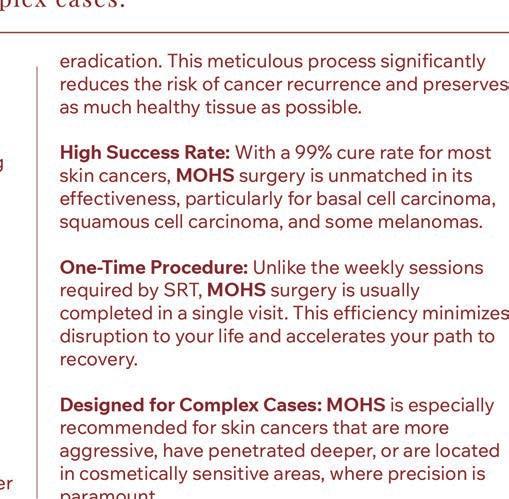



All photos are of birds that Mike Moore has spotted in the Middletown-Odessa-Townsend area, except for this group shot, which is courtesy of Christopher Rowe Birders Rod Murray, Christopher Rowe and John Skibicki at the Ashton Tract within the Augustine Wildlife Area.

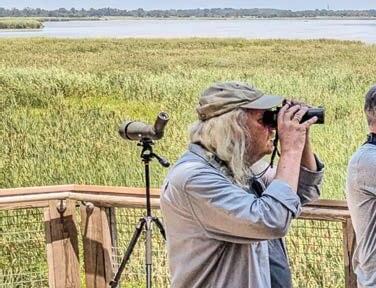

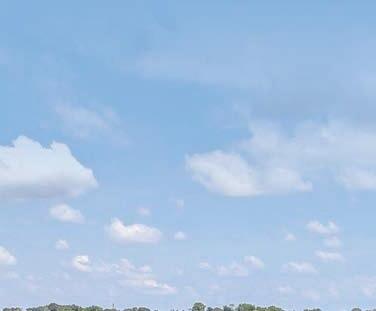
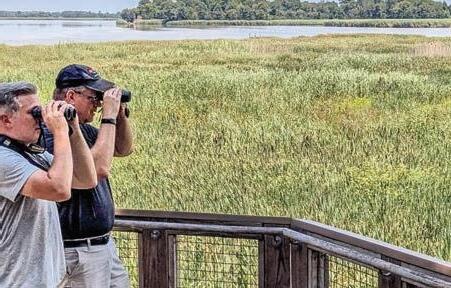
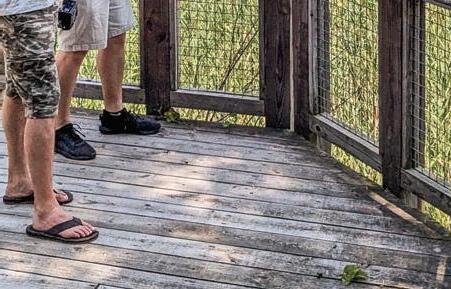





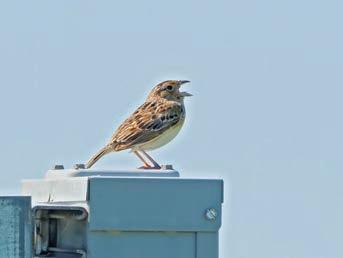
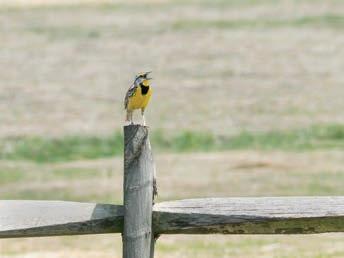
These three photos are of special birds that breed at Price Park in Middletown. The park is one of the few places in the state where bobolinks breed, and this male was spotted among the flowers in the meadows surrounding the park. A male grasshopper sparrow sings from a metal fence post in the meadows surrounding Price Park. This species is an uncommon breeder in the state but easy to find at the park. A male eastern meadowlark sings from a wooden fence post at Price Park, one of the few places in the state where this species breeds.
By Ken Mammarella Contributing Writer
“The crown jewel of Delaware birding is Bombay Hook National Wildlife Refuge,” said Mike Moore, president of the Delaware Ornithological Society and a birder since age 11. “It attracts people from all over the United States, if not the world.”
The refuge is just 20 miles as the crow flies from Middletown, and the MOT area itself has multiple worthwhile destinations for people interested in watching birds, listening to birds and
lengthening their life lists of birds that they have observed. Delaware, for such a small state, has a surprisingly high number of birds that have been spotted there.
Here’s the context: 429 species are on the official list of birds spotted in Delaware, as kept by the society on its website, www.dosbirds.org. That’s a significant portion of the 900 or so species for North America, Moore said.
Delaware has so many because it has a wide variety of habitats, including open beaches, saltwater marshes, freshwater marshes, the wooded hills of the piedmont in
Continued on Page 12
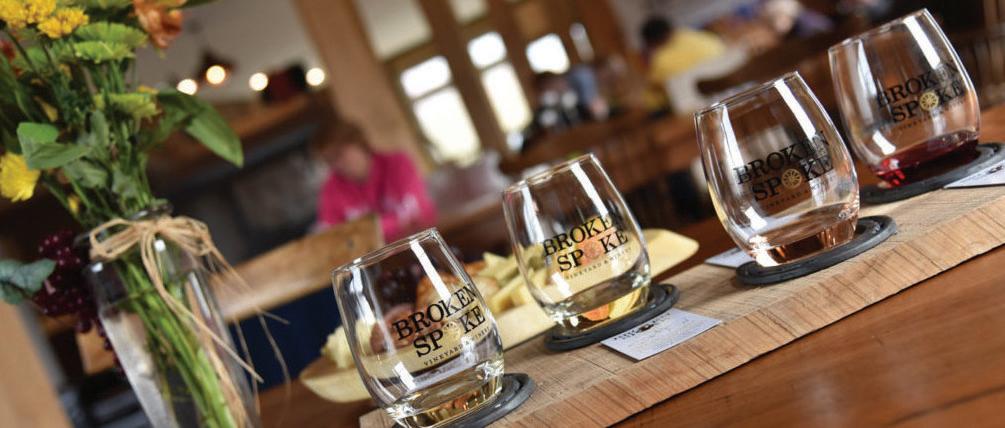
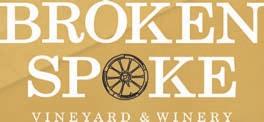

Continued from Page 11
northern New Castle County, the sandy pine forests of lower Delaware and the tall deciduous forests in between. Many species also like to migrate along Delaware’s coastline, part of a route called the Atlantic Flyway.
One of the hotspots for birding in MOT is Charles Price Memorial Park, a municipal park on the southwestern edge of Middletown.
“Every birder who’s trying to see as many birds in a year will visit Charles Price Park once or twice,” Moore said, acknowledging that parts are landscaped (picnic areas, playground, dog park), but they’re surrounded by meadows that many birds enjoy. Grasshopper sparrows, east-

ern meadowlarks, bobolinks and dickissels are among the birds he’s spotted there.
Moore said that other productive birding areas in MOT include Blackbird State Forest, just south of Townsend; the Port Penn area; the Ashton Tract, which is part of the Augustine Wildlife Area; and Thousand-Acre Marsh, just south of Delaware City. One special species found at the marsh is the sandhill crane, a very noisy bird.
“It’s kind of amazing that a western bird has moved east,” he said.
Continued on Page 14
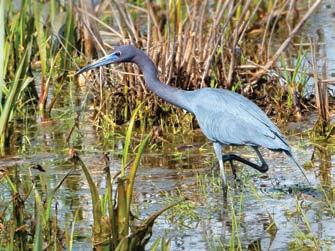
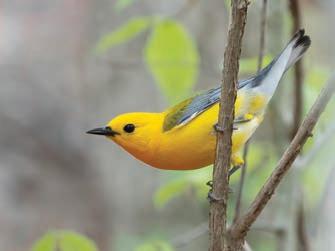


Continued from Page 12
‘All-around fun’
John Skibicki picked up birding 11 years ago, starting with feeders and nest boxes in his home, near Middletown.
“I wanted to see more birds,” he said, noting that his life list has now hit 330, including 282 in Delaware. “It’s nature, relaxation, enjoying the weather, seeing the birds, all-around fun.”
His favorite MOT spot for birding is the Augustine Wildlife Area, followed by the Chesapeake & Delaware Canal and Blackbird State Forest.
Christopher Rowe is also fond of the Augustine Wildlife Area, where a trail through the woods leads to an observation deck overlooking the marsh – very quickly hitting two different environments. He also likes Charles Price Park.

The mute swan, seen at Thousand Acre Marsh, was introduced from Europe to decorate ornamental ponds but escaped into the wild and has become widespread on the East Coast.

are
of Delaware’s most
Since becoming a birder in 2008, Rowe has added 334 birds in Delaware on his life list (275, he figures, within five miles of his house, near Port Penn), and 610 in the U.S. He started birding after his now-wife Erin Rowe started volunteering at Tri-State Bird Rescue & Research. They followed their avian interests with feeders and a lot of native plants for their landscaping.
“You get hooked on different types of birds,” he said. “And not all birds are feeder birds.”
The region’s “vibrant and active birding scene” inspired the American Birding Association in 2013 to move its North American headquarters from Colorado to Delaware City. The office closed in 2023, after remote work that started during the pandemic became a permanent practice.
Continued on Page 16


Continued from Page 14
A website called birda.org offers four reasons that birders keep life lists:
• The lists help birders “track and prioritize what they need to look out for and where they need to go.”
• They allow birders to “reminisce about their birdwatching adventures.”
• “Birders are social creatures that love to share information so a life list can also be used as a basis for birders to debate identifications, discuss specific species as well as share location-based information.”
• They “show off their experience and dedication to their hobby.”
Birding lists also matter in the Bird-a-thon, the Delaware Ornithological Society’s signature fundraiser. Over 10 days ending each Mother’s Day, teams pick 24 hours in a row to spot as many species as possible – 100 to 120 is common, and one team hit 174 – and sponsors are invited to make donations for every species spotted.
Continued on Page 18



Spring warbler migration is a big event for birders looking for migrating warblers like this male magnolia warbler, which migrates through Delaware in spring and fall and breeds further north.

An osprey, also known as a fish hawk, feeds on a fish near Port Penn. This species almost became extinct in the 1960s due to the effects of DDT, but after the pesticide was banned, it has made an amazing comeback and it now commonly seen nesting on platforms along the Delaware Bay.



The female pileated woodpecker is one of Delaware’s most impressive birds. This crow-sized woodpecker is fairly common in mature woods where it makes large, oblong holes up to several inches in length in dying trees searching for beetle larvae.


Continued from Page 16
Over 18 years, the Bird-a-thon has raised more than $800,000 that has been invested in saving nearly 3,000 acres of critical habitat. The initial focus was on the Mispillion Harbor downstate to protect red knots, shorebirds who migrates 9,000 miles twice a year, in one of the world’s longest migrations.

The society has also purchased and protected several tracts near Port Penn and Augustine Creek.
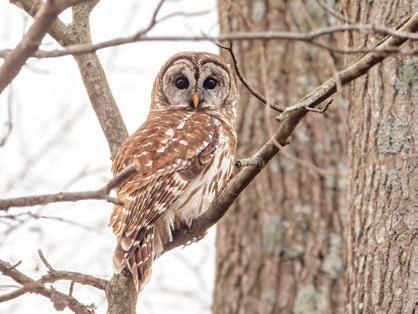
A barred owl photographed at Cedar Swamp Wildlife Management Area, south of Port Penn. This species likes swampy woods, and its “who cooks for you, who cooks for you all” call is a familiar night sound.
The society “is more than just a bird club,” Skibicki said. In addition to those conservation efforts, it also supports citizen science (such as hawk watches at the Ashland Nature Center and Cape Henlopen), joins in the Christmas bird count (which began in 1900 as an alternative to hunting birds during holiday gatherings) and every month runs field trips for grades one12. The society conducts about 50 field trips a year, and it meets monthly from September through May at the Ashland Nature Center in Yorklyn.
Skibicki said that birding is a great hobby.
“It’s scalable on the skill level and the time level,” he said. “You can go birding 10 minutes once a month, or all day all week.”
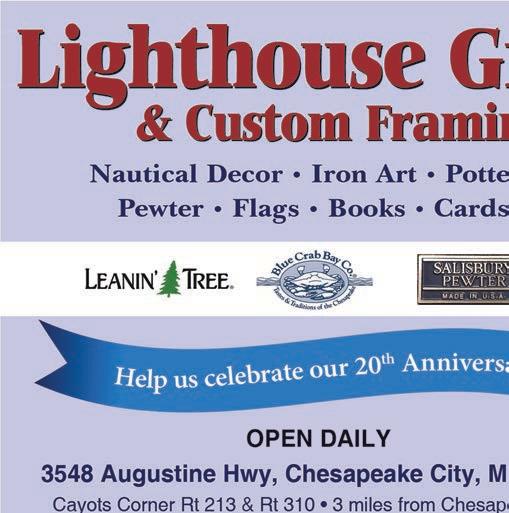
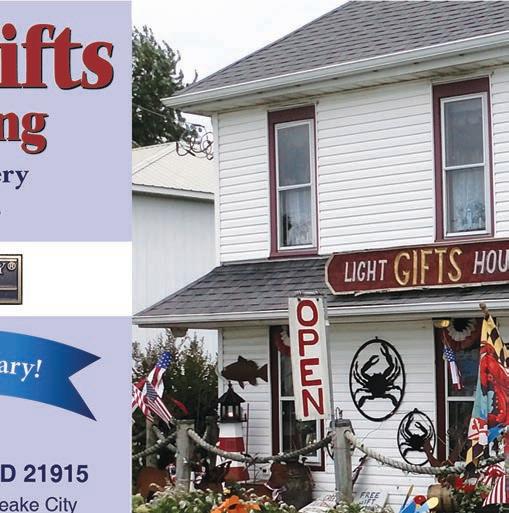



Since he took over Sully’s Irish Pub at the Witherspoon in 2009, Chuck Sullivan, Jr. has paired great food and drink with a decorative appreciation for those who have helped form Middletown’s history
By Richard L. Gaw Staff Writer
In most pubs across the nation, their walls are decorated with the generic tchotchkes of Americana, but at the Witherspoon in Middletown, the artifacts on its walls are part of what owner Chuck Sullivan, Jr. calls a fifty-cent tour that begins with the historical timeline of the building, sweeps through the acknowledgement of some of its most famous visitors and ends with a potpourri of treasured signage and trinkets that call to mind the Middletown of yesteryear.
It’s all part of the full experience of a visit to the famed site -- which originally opened as the Witherspoon Tavern in 1761 and ran as a colonial tavern for nearly 100 years -- so for the price of an easy request, Sullivan or anyone of his long-time staff will tell the stories behind the famous Everett Theatre sign, the original Witherspoon Hotel sign, blackand-white photos of long-time Mayor Kenneth Branner and his brother Johnny when they were high school football players, the Pittsburgh Pirates uniform of Middletown native Chad Kuhl, a photo of Kuhl’s wife and former Miss

Delaware Amanda, a framed display of fire equipment that is a tribute to firefighters in his family, a quote from John F. Kennedy, photos of Sullivan’s Irish grandparents, and the very sign that appeared on the front door of W.D. Hatton’s clock and watch repair shop for decades.
In short, a visit to Sully’s Irish Pub assures great food, the friendly company of neighbors and friends and the assurance that the pub’s signature Reuben will be enjoyed within the presence of local history.
Continued on Page 22
Continued from Page 21
June 20, 1775
“When I took over ownership of the pub in 2009, I was welcoming the birth of my son, Charlie, and in addition to Sully’s, he was taking up nearly all my time and energy,” said Sullivan, who grew up in Salem, N.J. and formerly owned a pub in Youngstown, Ohio for several years. “Around that time, I began to hear rumblings about the pub once being a colonial tavern and that George

As denoted on the wall at Sully’s Irish Pub at the Witherspoon, records state that George Washington once stayed at the Witherspoon Tavern.
Washington had stayed at the hotel. One day, a gentleman named Dave Schenk brought a book in called Thomas Jefferson: American Tourist.
“He told me to turn page 267, and there it was, from Jefferson’s own journal: ‘Attending the Continental Congress of 1775, on June 11, I left Williamsburg for Philadelphia. On June 20, paid service at Middletown Witherspoon’s for lodging.’ It lit a fire under me. I felt it was a story that must be told.”
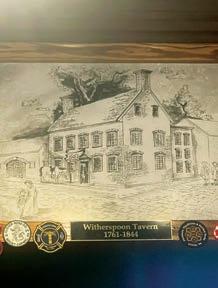
An illustration of the original Witherspoon Tavern hangs above the bar, as do photographs of the site throughout the various stages of its history.

Inspired by a book that reported that Thomas Jefferson once stayed at the Witherspoon Tavern, Sullivan’s research traced the third President’s stay to June 20, 1775.
Sullivan then called Jefferson’s estate at Monticello.
“I told the associate, ‘I want to know where TJ was on June 20, 1775,’” he said. “She sent me a copy of the microfiche of his actual journal entry. Later on, we obtained a similar log indicating that George Washington stayed here.”
During his sleuthing, Sullivan found out another detail: the property forms what is considered Delaware’s oldest continuously surviving tavern.
Continued on Page 24
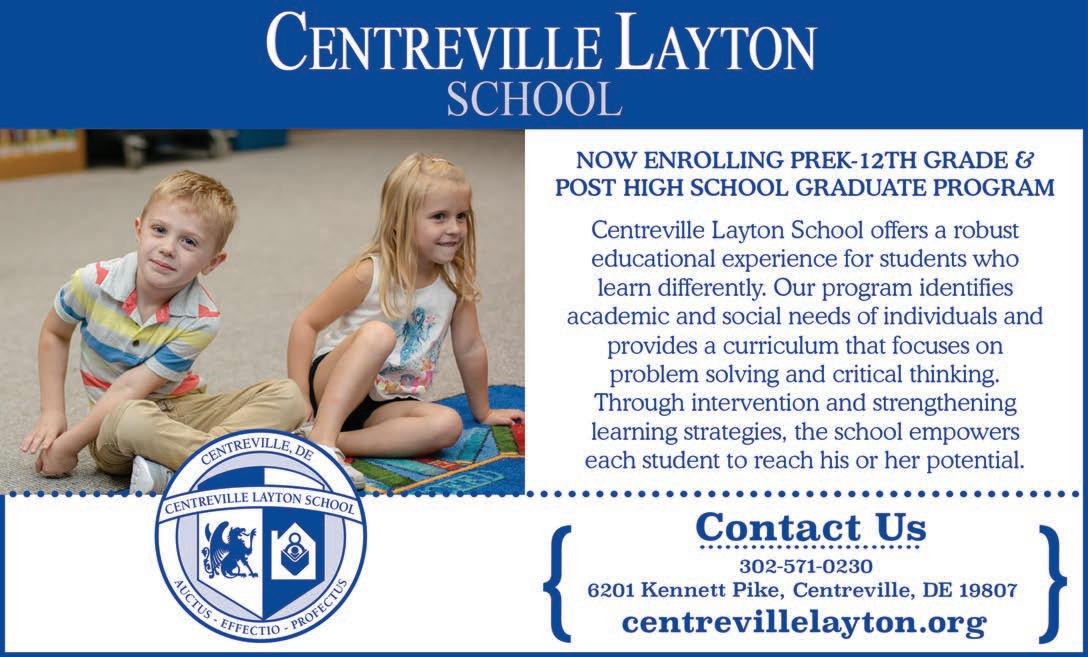






Continued from Page 22
“Jessop’s Tavern in Old New Castle predates us by 30 years, but it was originally built as a home and it ran as a home and a business until 1956, when someone stuck a tavern in,” he said. “We have served food and drinks and have had people sleeping upstairs since 1761.”
Recreating a landmark tavern wasn’t all Sullivan’s doing. He credits Fran Persaud, a former restaurant manager, for her creative assistance.
“I had all of the vision for the pub, but it was Fran who made it happen. She was instrumental in the placement of what has become Sully’s fifty-cent tour,” he said. “She got the Jefferson and Washington portraits framed. She hung a lot of the photos. Piece by piece, she took my ideas and brought them all to fruition.”
It’s not just the interior of Sully’s Irish Pub at the Witherspoon that continues to be at the top of Sullivan’s priorities. The pub has added outdoor dining areas that have become the hottest al fresco dining seats in town, with full views of the town square and Main Street. It has also seen new roofing installed and repairs from a June 30, 2023 fire in a second-floor apartment are being completed.
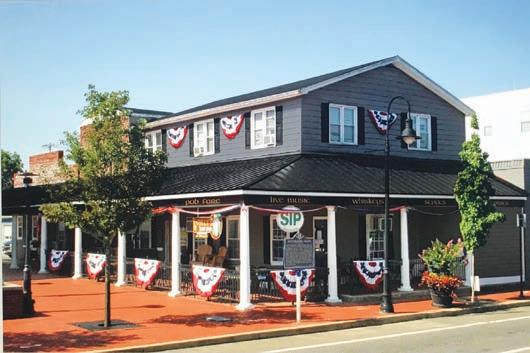
in 2009.
There has been another exterior project of Sullivan’s, one that firmly crystallizes his commitment to honor the history of the site for eternity. After several years of research and correspondence, he helped spearhead an initiative that in 2019 placed a Delaware historic marker in front of the pub that paid homage to the original Witherspoon Tavern and its owner, David Witherspoon. He even wrote its contents in his own words:
David Witherspoon, born in Ireland, built this tavern in 1761 as a midpoint between waterways to the east and west. While traveling to the Continental Congress, Thomas Jefferson lodged here on June 20, 1775. George Washington
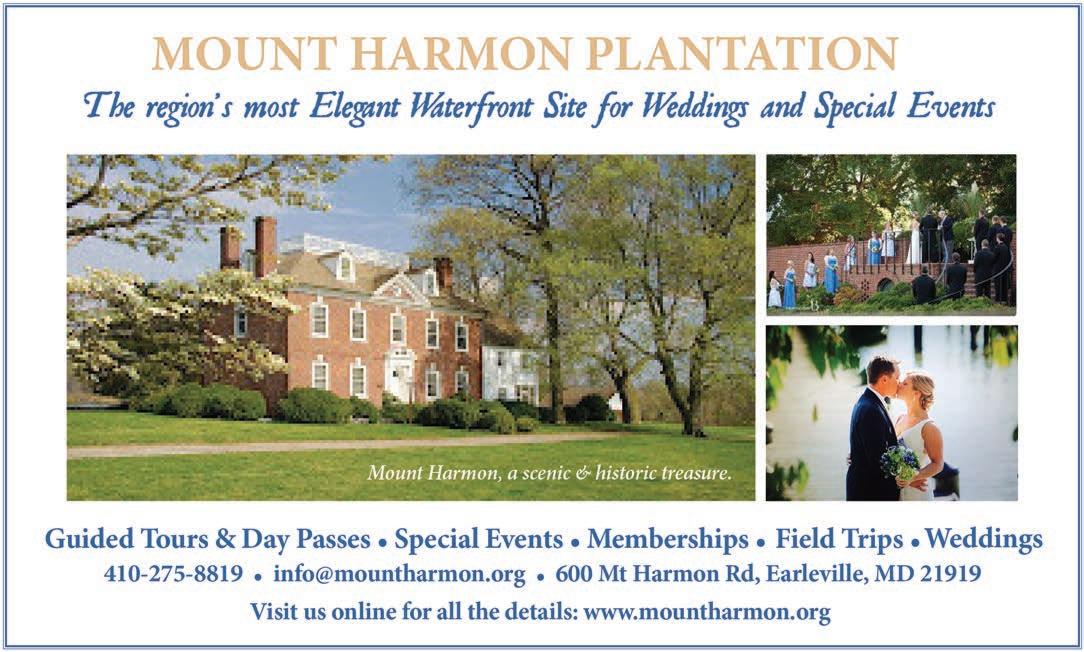
also dined at the Witherspoon on April 30 and May 19, 1784. Robert Cochran purchased the tavern in 1844 and later improved it into the Victorian style Middletown Hotel. The tavern has operated on the town square for more than 250 years. It has survived the American Revolution, Civil War, Prohibition, Great Depression and a devastating fire in 1946. The first floor and foundation from 1761 remain intact.

Sullivan was instrumental in leading the initiative that in 2019 placed a Delaware historic marker in front of the pub that paid homage to the original Witherspoon Tavern and its owner, David Witherspoon.
“My son Charlie is now 11 years old and years from now, as he drives through his hometown, I want him to be proud of his dad for discovering and preserving all of that history,” Sullivan said. “He can look at that historic marker and say, ‘My dad wrote that.’”
For nearly the past 15 years – supported by his longtime and trusted staff – Chuck Sullivan, Jr. has exuberantly

and humbly donned several hats at Sully’s Irish Pub at the Witherspoon. Greeter. Connector. Conversation starter. Unofficial Middletown history museum curator. Visionary. He loves every hat he wears.
“I have said this for several years and I will say it again: I do not own this pub,” he said. “This pub has been here for 263 years, and it belongs to the people of Middletown. I am merely the present-day caretaker. I take the responsibility of owning this piece of history very seriously. If someone takes a business trip to Wyoming and asks as their hotel, ‘Where do the locals go?’ they usually receive a response like, ‘Oh, everybody goes down to Joey’s.’
“From the time I inherited this historic landmark, I wanted Sully’s to be that place in Middletown, and I’m proud to say that it doesn’t belong to me. It belongs to all of us.”
To contact Staff Writer Richard L. Gaw, email rgaw@chestercounty.com.


By Gabbie Burton Contributing Writer
Though modern Middletown has come a long way from its historical peach-farming roots, the Middletown Historical Society’s annual Olde-Tyme Peach Festival and parade is a reminder of that important history.
Alison Matsen, who has been volunteering as Middletown’s museum coordinator for 20 years, shared the Historical Society’s preparations for the 31st festival and the local history it is aimed to highlight.
“We just want to raise people’s awareness that this is part of our history, growing lots of peaches,” Matsen said.
“When the railroad came through Middletown in 1855, that’s when peaches became even more important because then we could get peaches to places like Philadelphia and New York faster,” she said. “Right after that, that’s when there was a boom in the 1860s, 70s and 80s.”

Peach farming in Middletown goes back to the 1700s but Matsen emphasized that 1855 is the pivotal year for its impact.
Delaware was once known as the “Peach State” and the peach blossom is still the official state flower because of its historical significance and dominance in the peachfarming industry. Matsen shared that the reason for the successful peach farming in this part of Delaware is the “amazing” soil of the area that was perfect for growing peaches. The success of this peach farming and trade led to economic boost in the area that moved community development toward the modern Middletown residents now know.


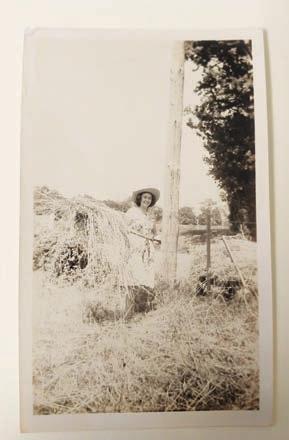
The demise of peach farming in Middletown was largely due to the difficulty of growing the crop. Matsen explained that climate conditions can heavily impact the crop and lead to buds dying before the fruit can blossom. Additionally, in the late 1800s, many peach trees in the area were affected by diseases such as “yellows” which affects the growth, ripening and taste of the fruit.
The Historical Society has a physical exhibit in their museum titled “People and Peaches,” that is currently open. The exhibit partially focuses on one man, Samuel Jones, a Black peach farmer whose admirable work led to success in the industry in the late 1800s and early 1900s. The Historical Society also has a virtual exhibition telling the significance of Middletown peaches and Samuel Jones available on their website. Additionally, the museum has three new exhibits that festival attendees can enjoy. In June, they opened up two new exhibits: “The Everett Theater” and “Play Ball: Sports in Middletown.” On Aug. 2, just two weeks before the Old Tyme Peach Festival, a third new exhibit will be opening, “Making a Home in Middletown.” This exhibit features a collection of personal effects from the late 1800s to the 1960s donated to the historical society from one Middletown family.
Matsen said the exhibit will explore how the EvansEllison-Motter family interacted with historical events such as wars and the great depression as well as show the evolution of life in Middletown through one family.

Continuing exhibits that will be available include the underground railroad exhibit, the old schoolroom, the exhibit on Jewish families of Middletown, the introductory to Middletown exhibit and an art exhibit.
Though Middletown has grown beyond its peachfarming roots, “people and peaches planted seeds that shape Middletown today,” and the Old Tyme Peach Festival is just one way the historical society is celebrating that sweet history.
The Middletown Historical Society is located on 216 N. Broad St, Middletown and is open every first Friday and the third Saturday of the month from 1 p.m. to 4 p.m. They will be open on Aug. 17 for the Olde-Tyme Peach Festival from 10 a.m. to 4 p.m.


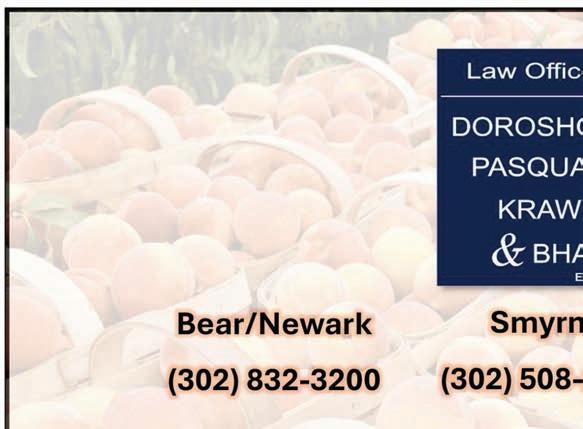





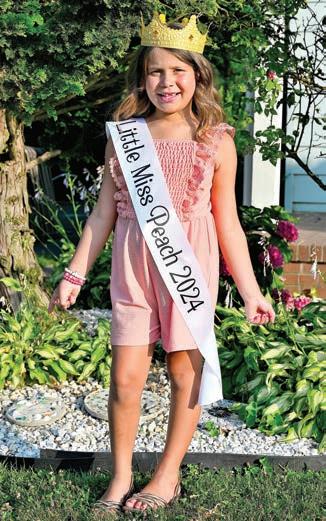
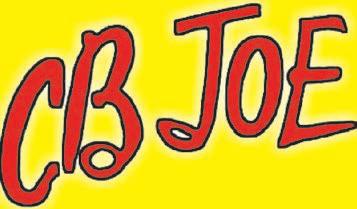


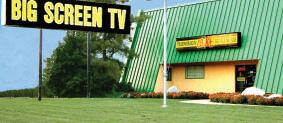





















Of the many time-honored traditions at the Old Tyme Peach Festival, perhaps one of the most important is the presence of Little Miss Peach and Little Sir Peach. As they prepare for this year’s festival, Middletown Life recently caught up with Little Miss Peach Ellie Hawkins and Little Sir Peach Nash Hoagland and asked them a few questions.
How old are you?
Nash: I am eight years old.
Ellie: I am six years old.
What town do you live in?
Nash: I live in Middletown.
Ellie: I live in Middletown.
What are your parents’ names?
Nash: My parents are Courtney and Ben.
Ellie: My parents are Lauren and Marshall. Where do you attend school?
Nash: I attend Lorewood Grove Elementary School.
Ellie: Last year, I went to Brick Mill Early Childhood Center.
Continued on Page 32

Continued from Page 31
What grade will you be entering in the fall?
Nash: I will be entering the third grade at Lorewood Grove Elementary School.
Ellie: In the fall, I will be attending Silver Lake Elementary in the Spanish Immersion Program.
What are your favorite subjects in school?
Nash: Knowledge, which is when we learn about bugs and the War of 1812 and other things. I also like recess, but my mom said that isn’t really a “subject.”
Ellie: My favorite subjects in school are recess, music and physical education.


What are your favorite activities when you are not in school?
Nash: I like to go outside and ride my bike and read books. The last book that I read was Treasure Island and I liked it a lot.
Ellie: I like to go to the pool and the playground.
Are you a member of any teams or organizations?
Nash: Yes, I play baseball for the MOT league. This past season I was on the Phillies.
Ellie: Right now, I am doing CrossFit Kids at CrossFit Petram, and during the school year I like to do gymnastics at Tumble Kids.



What is your favorite movie or TV show?
Nash: This is a hard one. My favorite movies are Home Alone I and Home Alone II. I can’t pick a TV show. I like a lot of them.
Ellie: My favorite TV show is “Bluey.”
What is your favorite type of food to eat?
Nash: My favorite food is homemade pizza!
Ellie: My favorite food is meatloaf.
What is your favorite restaurant in the Middletown/Odessa/Townsend area?
Nash: Sushi Yama. I LOVE their chicken because it comes with a lemon I can squeeze onto it. They also have cool sodas.
Ellie: My favorite restaurant is Taco Reho.
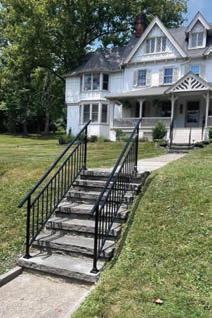
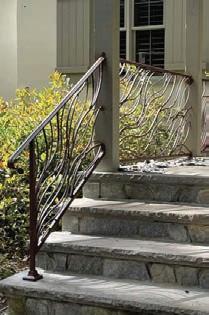

What is your favorite place to visit in the Middletown/Odessa/ Townsend area?
Nash: The Everett Theater. My Mom and Dad take us there sometimes and I like to watch their plays and movies.
Ellie: I love to go to Twisted for frozen yogurt and all the toppings!
What are you looking forward to most at this year’s Old Tyme Peach Festival, besides being Little Sir Peach and Little Miss Peach?
Nash: I can’t wait to get peach ice cream again. That was SO delicious. Ellie: I usually like getting candy at the parade, but this year I am excited to ride in it.
Have you decided what you would like to do for a living when you get older?
Nash: I would like to become an astronaut or a storm chaser. Ellie: I want to be a teacher because it sounds fun.
What is your favorite joke or riddle?
Nash: My favorite riddle is this Greek riddle: “What walks on four feet in the morning, two feet in the afternoon, and three feet at the end of the day? The answer: MEN. In the early morning of your life, you are down on all fours crawling as a baby. In the noon of your life, you are strong and grownup and

can walk on two feet. In the end of the day of your life, you are old and bent down, you have a cane plus your two feet, which equals three feet.
Ellie: My favorite jokes are knockknock jokes. All of them.
If you could meet one person you admire but do not know, who would that person be?
Nash: I would like to meet Bryce Harper. He is a really good baseball player and one time, in a game, he hit a lot of home runs and I think that is so cool!
Ellie: I would like to meet Taylor Swift, because I really want to meet her and know all of her songs.


Our mission is simple: to deliver quality, integrity, and complete satisfaction to all our valued customers throughout the surrounding areas.


















































































































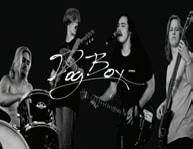

for the 2024 Peach Festival, August 17, 2024
The public driving into town for the Peach Festival are urged to use the two principal parking areas. Shuttle buses for handicapped & seniors will circulate to the locations frequently and will be available from 8 a.m. through the close of the festival at 4:30 p.m. Please look for the shuttle sign for pick up & drop off locations.
N Broad St. (Rt 71) Appoquinimink Old Public Library (651 N Broad St),
N Broad St. (Rt 71) Dutch Country Farmers Market, Middletown Shopping Center lot (701 N Broad St).




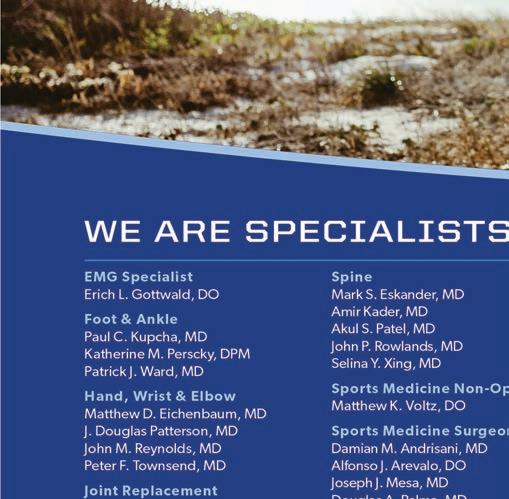





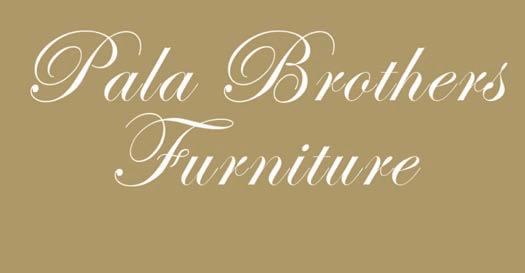






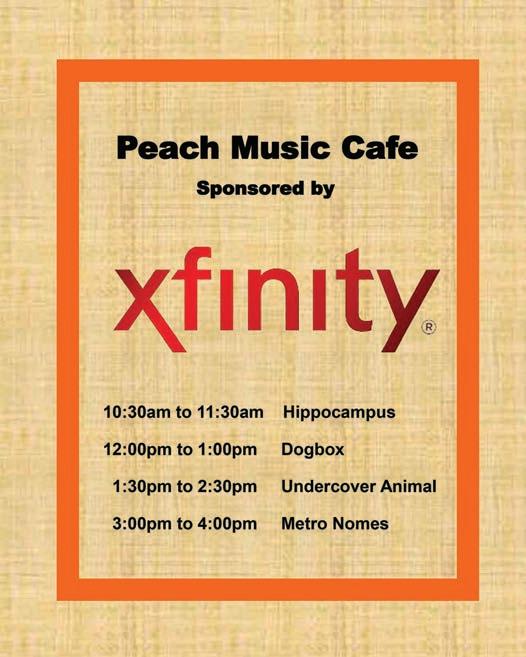



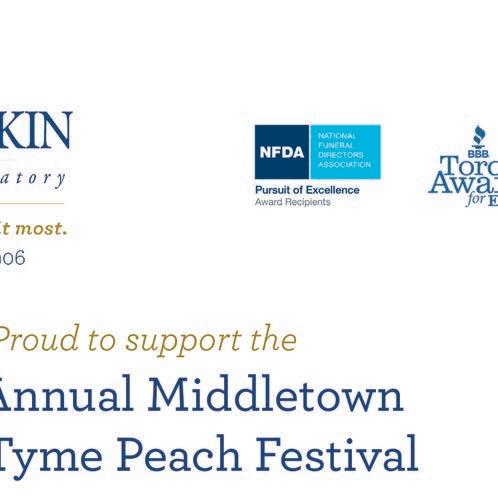

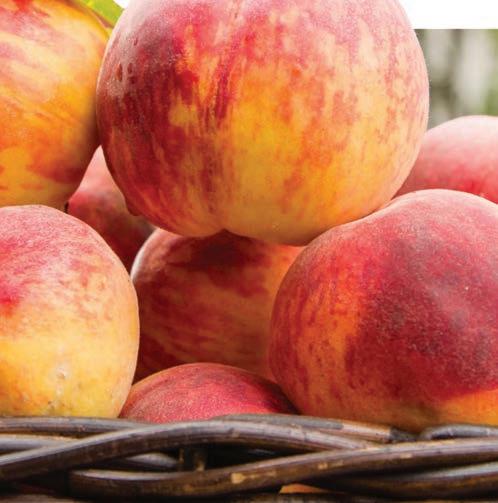





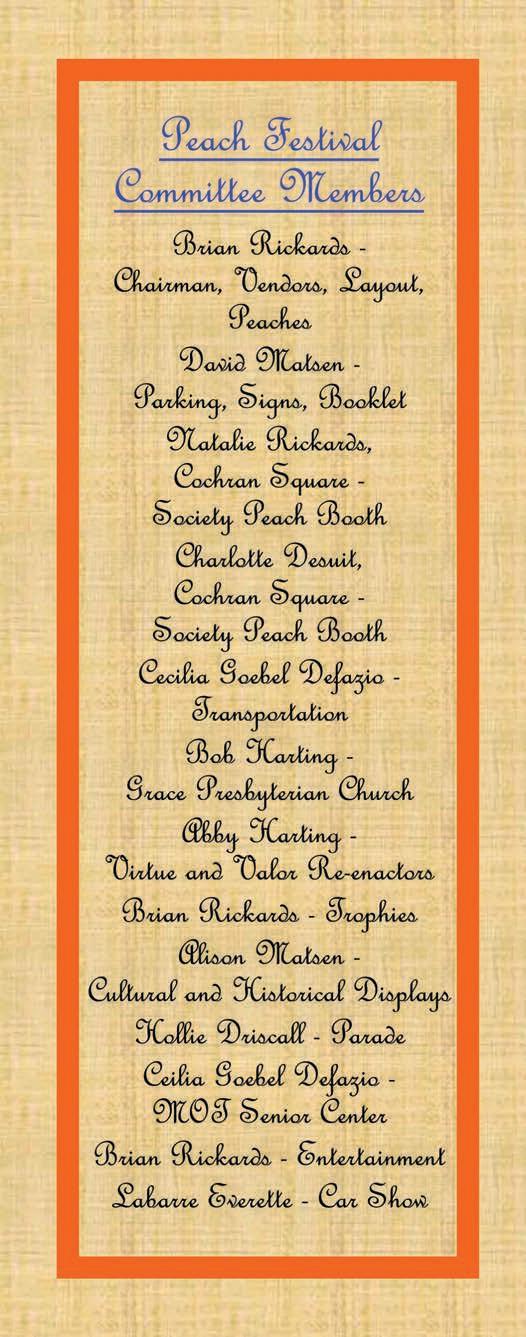


























































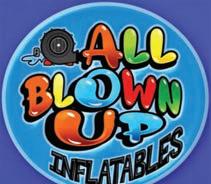







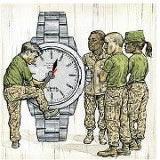


















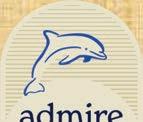







































By HaLeigh Abbott
Contributing Writer
When a fall chill takes the air and the leaves begin to change, the Middletown Historical Society will have a fun and educational way to embrace spooky-season. For the first time this year, the Mourning, Mischief and Mayhem Scavenger Hunt will be available for those seeking a new spin on walking tours. The family-friendly tour can be completed at the participant’s pace, though a cash prize will be available for the first team to complete the hunt.
The idea for the scavenger hunt originated in a survey of Middletown residents who wished to see more interactive and exciting ways to learn about the town’s history. While walking tours are available through the Historical Society year-round, the program volunteers developed the scavenger hunt to appeal to guests looking for more. An interactive app that can be used on smartphones will guide users from point to point in Middletown and surrounding areas, prompting different challenges at each location.
Participants can expect to search for the oldest cemetery in town, or take pictures in front of The Everett Theater. This first stage in Middletown opened in 1863, and was originally known as the “Town Hall and Opera House.” It thrived as a performing arts and cultural center until falling in a fire in 1918 and again after reopening in 1922. The Everett was also featured in the movie Dead Poet’s Society in 1989, along with the nearby St. Andrew’s School. Ghost stories from The Everett abound, so be sure to check those selfies for any unplanned photo-bombers!
The historical timespan for the scavenger hunt covers the Mid-Victorian era through the 1950s. Traditional


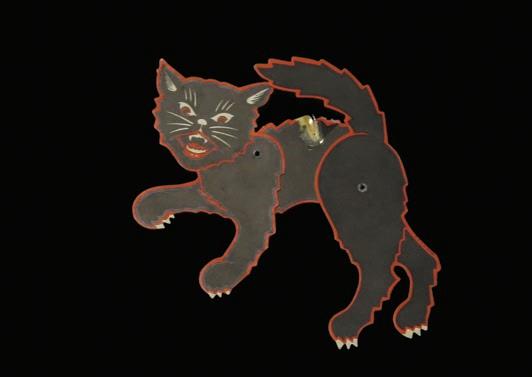
Halloween decorations from Berkman’s Store will be displayed, which are only usually seen during the annual Main Street Trick-or-Treat program. Berkman’s Store opened in 1896 by Joseph Berkman, who immigrated to Middletown from Poland and met his wife Anna Waronker. Joseph Berkman Variety Department Store opened southeast of the intersection of Broad and Main streets. Local advertisements for Berkman’s store could be seen all over town, including on the Everett Theatre’s big screen. The Berkman family, including their two sons, were integral parts of Middletown’s community, and they were involved with the Rotary Club and the Volunteer Hose Company.
Continued on Page 48



Participants will also learn of the mourning rituals during the Victorian Era, including superstitious customs such as draping bombazine fabric (a thick, wool fabric that reduces reflection) over household mirrors, preventing the deceased’s soul from getting trapped in the mirror. Other theories behind this custom include reducing distraction for mourners by focusing on the deceased, rather than their own reflection, or preventing evil spirits that attach themselves to reflections after a death.
Abby Harting from the Middletown Historical Society explained that the goal of the scavenger hunt is to teach the history of Middletown rather than scare participants.
“We have so much in common with people who lived 200 years ago and we all have the same needs—food, shelter, employment,” she said. “We’re really not that different and it’s important to remember our history.”
While downtown storefronts have changed and customs have evolved, revisiting the rich, long history of Middletown

links the present with the past. Incorporated in 1861, Middletown was originally a tavern-stop town for travelers moving through the old cart road extending across the peninsula between Appoquinimink Creek in Odessa and Bohemia Landing on the eastern branch of the Bohemia River in Maryland—thus, the name “Middletown.” Among the oldest buildings in town is the Middletown Academy, erected in 1826 that was the former town hall on Broad Street and now houses the Middletown Area Chamber of Commerce and the Middletown Historical Society.
The Middletown Mourning, Mischief, and Mayhem Tour will be available in late October for a small fee, which benefits the Middletown Historical Society. Keep up to date with news by following the social media accounts on FaceBook (Middletown Historical Society) and Instagram (@middletowndehistory), or visit their website at https:// www.middletowndehistory.com.












The Women’s Club of Odessa has announced the 60th anniversary of Christmas in Odessa.
The event will take place on Saturday, Dec. 7 from 10 a.m. to 5 p.m. with a self-guided tour of private and homes and public buildings that will be festively decorated for the holiday season in historic Odessa.
To celebrate the occasion, many special activities are being planned for this year including a 60th anniversary coffee table book. Plan to stay for the tree-lighting ceremony afterwards, too.
This annual event is a fundraiser
for educational scholarships for high school seniors who reside in the Appoquinimink School District. Over the last six decades, the Women’s Club of Odessa has awarded scholarships totaling over $300,000, and are grateful for the community’s support in helping over 200 high school seniors.
For more information, please visit christmasinodessa.com or find them on FB or IG @christmasinodessa.
on Saturday, Dec. 7 this year, with special events planned for the 60th anniversary event.

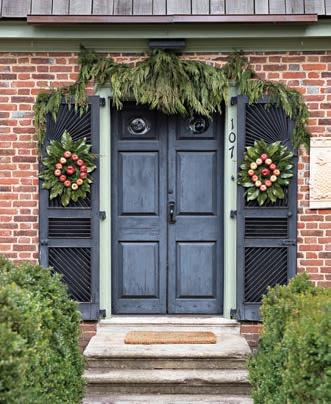





BBQ
Stoltzfus BBQ hosts our famous Pig Roasts & Chicken BBQ! Chicken BBQ Legs and Thighs are grilled over a charcoal pit. A selection of Sandwiches, Dinners, Quarts, Pints, and Party trays are available to go for the Pig Roast. Legs & Thighs available to purchase for the Chicken BBQ.


2024 Dates: August 29th, 30th & 31st October 3rd, 4th & 5th CLOSED
Oct. 11, Nov. 28, Dec. 25, 26. See website for special hours the weeks of











By Ken Mammarella Contributing Writer


The Chesapeake & Delaware Canal is more than a 14-mile shortcut across the Delmarva Peninsula.
“It’s an important maritime corridor,” said Stephen Rochette, spokesman for the U.S. Army Corps of Engineers, which owns the canal and the bridges that cross it. “We work hard to maintain it.”
Traffic today includes 1,500 to 2,000 barges a year – motor vehicles are the most common cargo, supplanting petroleum products and coal as economic drivers – and even more pleasure craft. Ships between the Port of Baltimore and points north save 300 miles by using the canal, and it’s generally estimated that 40 percent of the traffic to and from that port goes through the canal. The port made big news in March when a cargo ship hit the Francis Scott Key Bridge, temporarily closing the port.
From Chesapeake City, Maryland, the Corps’ marine
traffic controllers “keep things flowing smoothly, efficiently and, above all, safely,” a 2015 documentary on What’s Up? Media noted. Corps operations also include regular dredging of the canal and its approaches and upkeep of the bridges.
Over the centuries, all that dredging has exposed a lot of fossils, most famously the pen-shaped belemnite, which is Delaware’s state fossil. However, “most of those spoils are no longer accessible [to fossil hunters] due to the construction of a new bridge and a bicycle path, riprap deposits, use of the spoils for barrow and returning vegetation,” according to the Natural History Society of Maryland.
The canal is also important culturally. Just like the Mason-Dixon line symbolizes cultural differences between the northern and southern parts of the United States, the canal does the same for Delaware. Upstate is more urban and faster-paced, and downstate is more rural. But growth in coastal Sussex County is redefining what it means to live “below the canal.”



From the U.S. Army Corps of Engineers, Edward J. Ludwig III’s The Chesapeake & Delaware Canal 150th Anniversary: Gateway to Paradise, David A. Berry’s A History of the Chesapeake & Delaware Canal, Maryland Public Television’s The Chesapeake & Delaware Canal: Gateway to the World and other research.
Augustine Herman is the first European to suggest building a canal across the peninsula. Later supporters include polymath Benjamin Franklin.
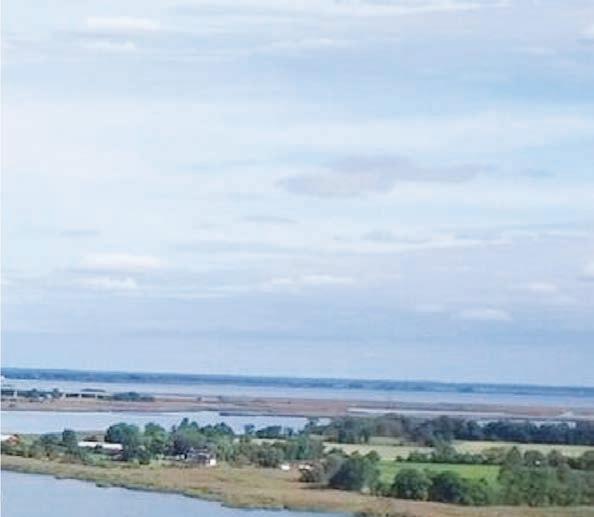
The Chesapeake & Delaware Canal Co. is formed. It surveys various routes, with the top two running from the Elk River to New Castle and from Back Creek to St. Georges Creek. The company – partly backed by three states and the federal government – starts digging an eventually unneeded feeder canal in 1804-05. They run out of money and make a dozen fruitless appeals to Congress for bailouts.
The Chesapeake & Delaware Canal and its surroundings have changed a lot since excavation started in 1804. One of the latest is converting the old
The canal company orders more surveys (there would be about 30 over the decades) and decides on the current route, 10 feet deep, 66 feet wide at the waterline and 35 feet wide at the bottom, with four locks. Surveyor John Randel, Jr. dismisses concerns about the difficulty of cutting through an 80-foot-high ridge (near the Summit North Marina) and spongy soil near Newbold’s Landing (now Delaware City). He later buys Bohemia Village (renamed Chesapeake City in 1839) and leads building the eastern end of the canal. He clashes with management, and his contract is suspended. He sues.
1824
Continued on Page 55

On April 15, digging of the canal starts. A bridge over the canal at St. Georges opens in 1826.

The canal officially opens on Oct. 17, at a cost $2.5 million, or $165,000 per linear mile, eight times the linear-mile cost of the Erie Canal. That uncooperative marshy soil had added $1 million to the cost and delayed work several years. Tolls are set for 206 products, from a penny for a bushel of grain to $12 for a bushel of fresh fish. Fines authorized in 1832 end rampant toll fraud. Randel sells his village. The canal company, much to its later regret, does not charge individual passengers.
The canal company marks $51,000 in revenue from about 5,300 boats, but it would deliver a dividend to stockholders in only 11 of the next 116 years.
1831

The New Castle & Frenchtown Railroad opens just to the north. Companies that ferry people try to counter the competition and petition the canal to allow steam-powered boats, which had been banned because the wakes from fast boats eroded canal banks. The railroad, the canal company and steamboat companies argue over revenues for more than a decade.

on Page 58







Continued from Page 55
1833
Continued from Page 58
A storm damages the banks so much that the canal closes for 10 days. Major landslides follow in 1834, 1837 and 1839. The canal closes for three weeks in 1837 because of problems with the locks.
Randel wins a $226,000 judgment from the canal company, which Berry calls “the largest award for unliquidated damages up to that point in the United States legal system.” The company ignores the ruling. Randel files more lawsuits and sets up his own tollbooth in Delaware City. He eventually receives money from the canal company.
The canal company marks its best year in cargo: 1.3 million tons. Tugboats and mules (teams of three to
five, plodding on the north bank) take five to six hours to tow boats from end to end.
Heavy rains in August and the collapse of its largest reservoir close the canal for two months.
The federal government asks the Corps to study various routes for a sea-level canal.
The Angus Commission in 1906 recommends that the United States buy the canal for no more than $2,514,289.70. It does, for that amount in 1919, and removes the tolls.
Edna Ferber publishes Show Boat, following research of the James Adams Floating Theatre on the Chesapeake

David Kappler photo courtesy of U.S. Army Corps of Engineers
The H.R. Spies is a hydrographic survey vessel for the Corps for the canal and nearby waters.
Bay and into the canal. The novel becomes a hit on Broadway and as a movie.
The canal is rebuilt without locks. The $10 million project makes it 12 feet deep and 90 feet wide. The eastern entrance goes two miles south to deeper water (but still marshy land) at Reedy Point. In 1933, the corps starts another expansion (27 feet deep and 250 feet wide). “Still, the canal was not big enough and between 1938 and 1950, eight ships collided with bridges,” the Corps writes.
Continued on Page 60
















Continued from Page 58
On July 28, the Franz Klasen hits the lift bridge at Chesapeake City, closing the canal. It’s wartime, and people photographing the ship – carrying six anti-aircraft guns and lots of ammo –have their film confiscated. The Corps sets up ferries, which run until 1949, when the new bridge opens.
On May 15, the F.L. Hayes, carrying 640,000 gallons of gasoline, collides with the freighter Barbara Lykes. The Hayes explodes, closing the canal for 103 days until the wreckage is cleared.
Congress authorizes $100 million for another expansion (35 feet deep and 450 feet wide). The work is completed in the 1970s.
The lock complex in Chesapeake City is declared a national historic landmark. In 1968, the Corps opens a museum in the original lock pump house. The replica Bethel Bridge Lighthouse near the museum exemplifies the lighthouse that used to warn vessels of locks and bridges prior to 1927. Both Chesapeake City and Delaware City have districts on the National Register of Historic Places.
Chesapeake City starts an event celebrating the canal, variously called Canal Day, Canal Days and CanalFest. On the water, partying is unsanctioned and raucous. The official event ends in 2012.
Delaware City starts its own event celebrating itself, called Delaware City Day.
The towpath becomes the Michael N. Castle C&D Canal Trail for pedestrians, bicyclists and sometimes equestrians. Trailheads are at Delaware City, Biddles Point, St. Georges and Lums Pond State Park, going on to the Ben Cardin trail and a trailhead at Chesapeake City. The Delaware Division of Fish & Wildlife manages 5,000 protected acres on both banks for hunting, fishing and recreation.
The canal becomes part of the National Park Service’s Network to Freedom, a listing of places that helped enslaved people escape to freedom. One of the best-documented of these efforts occurred in 1856, when Harriet Tubman led a woman named Tilly from Baltimore north to her fiance.
To read a local author’s perspective on the C & D Canal, see Page 62.
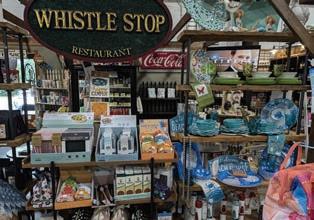




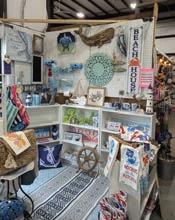

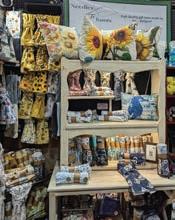









By David Healey
What do I love most about living along the canal? For me, it’s the fog horns. I’ve been living along the Chesapeake & Delaware Canal in Chesapeake City for decades and that forlorn wail still sends a shiver down my spine on a foggy autumn morning. On the list of the canal’s charms, fog horns are closely followed by the lights on the water at night and the way the setting sun makes the Route 213 bridge glow. The canal remains an endless source of wonder.
The next time that you are digging a hole to plant a shrub or bury another Mason jar filled with silver coins, contemplate how hard it was to dig the canal. Imagine the backbreaking work of digging a ditch 10 feet deep and 60 feet wide from Delaware City to Chesapeake City. That’s
Continued on Page 64

about how big the canal was back then. Records show it was mostly African-Americans and Irish immigrants doing the work, so it’s likely that one of my distant Irish cousins was among those wielding a shovel for $2 a week.
My house has an interesting history. It was built around 1913 and for many years was home to Captain Charles Cooling and his family. He was the town mayor and also a buy boat captain. I used the house as inspiration for my mystery novel, The House that Went Down with the Ship Years ago when I first bought the house, my parents would come over to help paint or steam off the old wallpaper. Whenever a ship or tugboat came by, they scrambled off the ladder or set aside their paint brushes to rush out into the backyard and watch the boat go by. That was 30 years ago and they are both gone now, but I’ll still drop everything and watch a passing ship, so it’s like they’re still here watching the boats with me.
Chesapeake City, known as Canal Town, grew up around the canal locks in the late 1800s and early 1900s. I never
get tired of walking past the old houses and saying hello to the kind people who live here.
You don’t have to live on the canal to enjoy it. The canal belongs to everyone. Go have a crabcake at Schaefer’s Canal House or sit on the porch at Café on the Bay and sip a coffee. An ice cream isn’t a bad idea, either. Drive down to the waterfront and park for a while, just enjoying the view.
At the website www.marinetraffic.com you can see what ships are coming and plan accordingly. For some great canal history, be sure to watch the recent Maryland Public Television documentary “The C&D Canal: Gateway to the World.”
Finally, there’s also the C&D Canal trail where you can stroll or rent a bike. Whatever you do in Chesapeake City, relax. Soak in the canal sights. Remember those who came before. Let your thoughts drift with the tide.
Chesapeake City resident David Healey is the author of 30 books, including Great Storms of the Chesapeake and Delmarva Legends & Lore. https://davidhealeyauthor.com.













